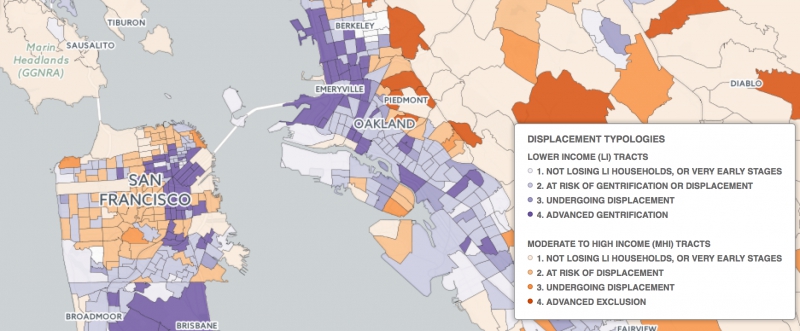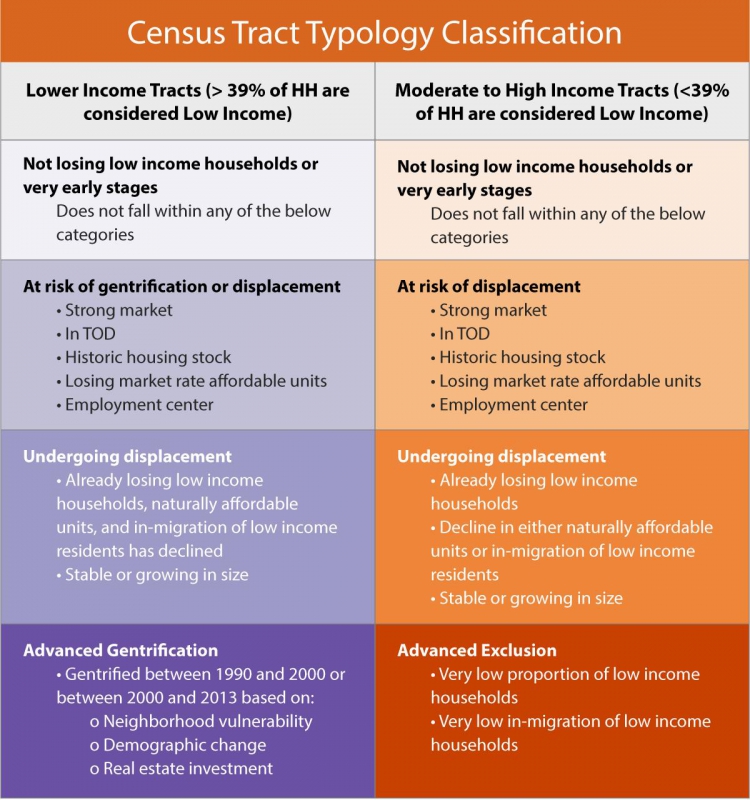From the Open-Publishing Calendar
From the Open-Publishing Newswire
Indybay Feature
California
East Bay
San Francisco
Global Justice & Anti-Capitalism
Health, Housing & Public Services
Mapping Displacement and Gentrification in the San Francisco Bay Area
The Bay Area’s booming jobs and housing market necessitates a careful look at the causes and consequences of neighborhood change to protect residents that are most vulnerable to potentially being displaced. Wages for the Bay Area’s low income residents have not kept pace with the sky-rocketing housing prices resulting in massive demographic shifts in the area.
UC Berkeley analyzed regional data on housing, income and other demographics to better understand and predict where gentrification and displacement is happening and will likely occur in the future. This analysis, which is summarized in the interactive maps, will allow communities to better characterize their experience and risk of displacement and to stimulate action. The analysis behind these maps was validated through in-depth case studies of 9 Bay Area communities and with the support and advice of the Regional Prosperity Plan at the Metropolitan Transportation Commission. In developing 8 neighborhood displacement typologies, communities can better understand where they’re at and develop actions to prevent from advancing in the stages of gentrification and displacement.
Key Findings
In 2013, 48 percent of census tracts and more than 53 percent of low-income households lived in neighborhoods at risk of or already experiencing displacement and gentrification pressures.
Neighborhoods with rail stations, historic housing stock, an abundance of market rate developments and rising housing prices are especially at risk of losing low-income households.
Low income neighborhoods are not the only ones experiencing displacement pressures – many higher income neighborhoods that still house low income households are also rapidly losing low income population.
The number of tracts at risk of displacement are 123% higher than the numbers already experiencing them, indicating that the transformation of the Bay Area will continue to accelerate.
---------------------------------------
The Urban Displacement Project is a research and action initiative of UC Berkeley in collaboration with researchers at UCLA, community based organizations, regional planning agencies and the State of California’s Air Resources Board. The project aims to understand the nature of gentrification and displacement in the Bay Area. It focuses on creating tools to help communities identify the pressures surrounding them and take more effective action.
Key Findings
In 2013, 48 percent of census tracts and more than 53 percent of low-income households lived in neighborhoods at risk of or already experiencing displacement and gentrification pressures.
Neighborhoods with rail stations, historic housing stock, an abundance of market rate developments and rising housing prices are especially at risk of losing low-income households.
Low income neighborhoods are not the only ones experiencing displacement pressures – many higher income neighborhoods that still house low income households are also rapidly losing low income population.
The number of tracts at risk of displacement are 123% higher than the numbers already experiencing them, indicating that the transformation of the Bay Area will continue to accelerate.
---------------------------------------
The Urban Displacement Project is a research and action initiative of UC Berkeley in collaboration with researchers at UCLA, community based organizations, regional planning agencies and the State of California’s Air Resources Board. The project aims to understand the nature of gentrification and displacement in the Bay Area. It focuses on creating tools to help communities identify the pressures surrounding them and take more effective action.
For more information:
http://www.urbandisplacement.org/map
Add Your Comments
We are 100% volunteer and depend on your participation to sustain our efforts!
Get Involved
If you'd like to help with maintaining or developing the website, contact us.
Publish
Publish your stories and upcoming events on Indybay.
Topics
More
Search Indybay's Archives
Advanced Search
►
▼
IMC Network




